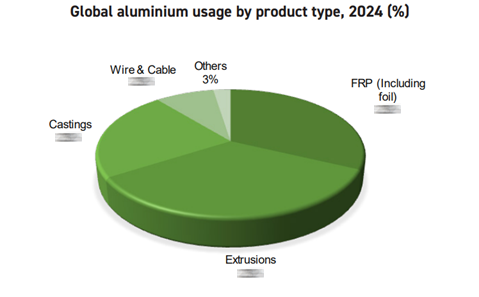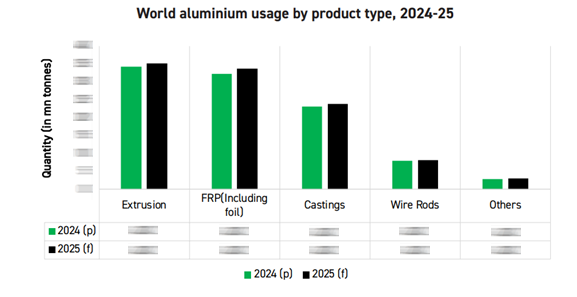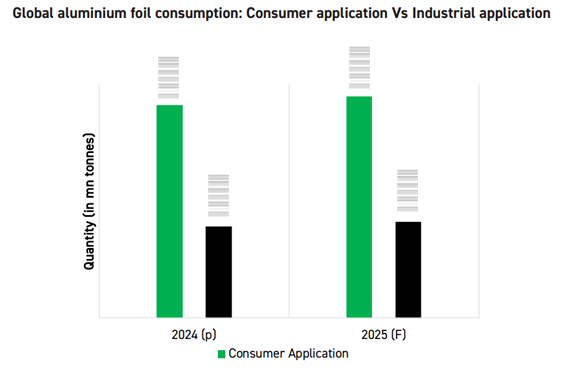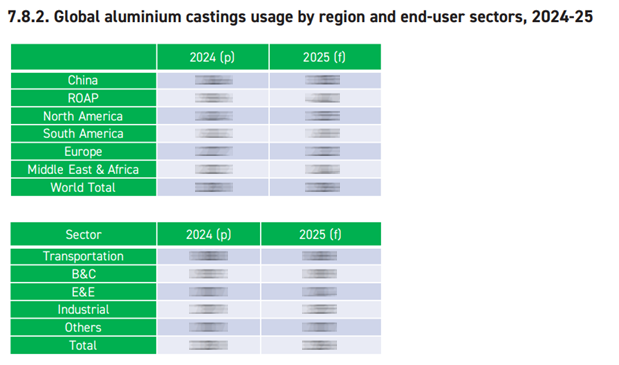

Global Downstream, End User and Recycled Aluminium Industry Outlook 2025
Downstream Sector (Aluminium usage by Downstream products, End-use and Recycled aluminium: Exclusive Industry Insights
A Lite Version of the "Global Aluminium Industry Outlook 2025"
Aluminium plays a vital role in shaping modern industries, from transportation and construction to consumer goods and sustainable packaging. As industries evolve, the demand for efficient, lightweight, and recyclable materials continues to grow. This report delves into the downstream sector, providing key insights into end-use product applications, market dynamics, and the future of aluminium recycling. Whether you are a manufacturer, investor, or policymaker, staying ahead of these trends is crucial.





Unlock exclusive insights into Aluminium's Downstream Sector
Why this report matters
The aluminium downstream sector is a crucial link between primary aluminium production and end-user industries, driving innovation in automotive, packaging, construction, aerospace, and electronics. This lite edition offers a condensed yet comprehensive overview, providing essential insights into downstream usage, key end-use markets, and the recycling landscape.
What's inside?
Who should read this report?
Exclusive benefits of this lite version
Concise yet detailed insights for quick decision-making.
Key takeaways and strategic recommendations.
Get your copy now!
Don't miss out on this essential industry report! Subscribe to the lite version and stay informed about the future of aluminium's downstream sector.
Methodology
Our study on the Aluminium Outlook 2025 will adopt a comprehensive, structured approach to analyse key aspects of the industry. The research will cover an in-depth assessment of raw material sources, price trends of alumina and bauxite, and examine the impact of global carbon tariffs and newly imposed United States tariffs on the aluminium sector. The study will be conducted through a multi-faceted methodology, detailed as follows.
1. Research Approach
The study was conducted through extensive secondary research, complemented by targeted primary research, and structured into the following key components:
2. Data Collection
To ensure a comprehensive market analysis, data will be sourced through multiple channels:
a. Reviewing Publicly Available Resources
b. Accessing Curated Databases
We utilised our in-house aluminium industry-focused database to support the research. For trade-related insights, we accessed and extracted relevant trade data using subscription-based trade data tools.
3. Data Validation
To ensure accuracy and alignment with client requirements, all collected data underwent a rigorous validation process:
4. Data Analysis
The collected data were systematically analysed using advanced methodologies, including historical data review, five-year price analysis, forecasting and projections, and trade data evaluation, to generate meaningful insights.
After analysing the information, a proprietary statistical tool was used for market estimation and forecasting, generating the quantitative figures and sizes of the market and its sub-segments for both the current scenario and the forecast period. This included production, consumption, and supply volumes, as well as usage by end-user sectors. After estimating the market sizes and figures, the numbers were verified through consultation with industry participants and key opinion leaders. The extensive network of industry participants added value to the research process by validating the numbers and estimates provided in the study. At the final stage of the research process, the findings were consolidated, and a final report was prepared.

